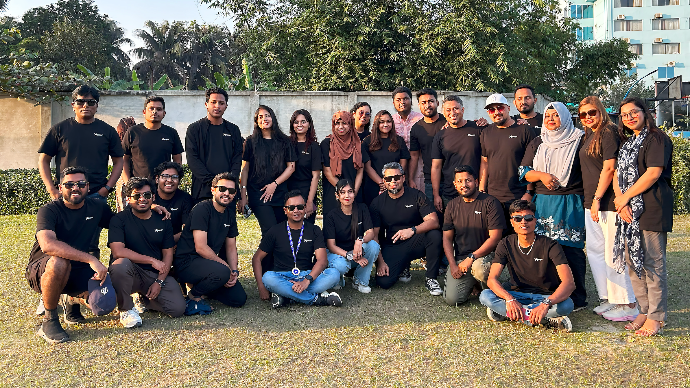
The Hometown team
Bangladesh’s startup ecosystem has shown significant growth, particularly in its major hub, Dhaka. This growth is driven by its large young population, increasing internet penetration, and growing digital adoption. The South Asian country has over 2,500 active startups, primarily focused on e-commerce, fintech, and logistics sectors.
One of Bangaldesh’s notable success stories is GoZayaan, an online travel agency with operations in Pakistan. This company has now launched a new app, Hometown, to revolutionise the lives of migrant workers living in countries like Singapore.
Hometown is a platform dedicated to empowering this underserved community by providing them with accessible travel and financial services.
Also Read: Wavemaker, Airbnb execs join US$2.6M financing round of B’desh OTA startup Go Zayaan
Founded by Ridwan Hafiz, Hometown is driven by a mission: to combat exploitation and build better futures for those who contribute significantly to the economy but are often overlooked.
The Genesis of Hometown
GoZayaan recognised a critical gap in the market. Migrant workers, who account for 60 per cent of international travel from Bangladesh, were frequently subjected to excessive markups and scams by unscrupulous travel agents.
“We realised we were missing a crucial segment,” Ridwan Hafiz tells e27. “Despite contributing 60 per cent of international travel from Bangladesh, these individuals—who earn the least—often end up paying the most”.
This realisation led to the birth of Hometown, a platform designed to provide fair and transparent services to this deserving community.
The app’s development was shaped by key insights into the challenges faced by migrant workers:
Exploitation: Research revealed that 32 per cent of migrant workers have been scammed at least once, often paying 20 per cent more than the standard market price due to hidden markups. Hometown’s solution is simple: fair pricing with no exploitation.
Digital access vs. payment barriers: While smartphone penetration is nearly 100 per cent, online payment adoption is close to zero. Migrant workers often find digital interfaces overwhelming. Hometown addresses this with an intuitive, guided user experience that removes unnecessary complexities.
Language barrier: Many migrant workers struggle with English, which discourages them from using digital platforms. Hometown is built entirely in Bangla, and a dedicated hotline provides native-language support.
Organic adoption and success
According to Hafiz, nearly 100 per cent of Singapore’s 110,000 Bangladeshi workers have downloaded the app without marketing spend. This was achieved by partnering with community leaders who recognised the value of Hometown in solving long-standing problems.
Also Read: FlyNow, PayLater: Fly0 seeks to transform travel finance for the underserved in Bangladesh
“When you build something that genuinely improves people’s lives, they’ll do the marketing for you,” notes Hafiz.
With a 38 per cent market share for Singapore-Bangladesh flights and US$5.5 million per month in remittance processing, Hometown’s success is driven by trust, affordability, and community-centric design.
Expanding horizons
Following its success in Singapore, Hometown is expanding to Malaysia and Saudi Arabia. While these larger markets present challenges such as diverse regulations, cash dependency and fragmented communities, they also offer massive scale and better value propositions. Hometown plans to replicate its successful playbook, starting with flights, then remittance services, and eventually lending products.
The future of Hometown: Lending and empowerment
Hometown is set to launch a lending product to disrupt predatory lending cycles. Migrant workers often resort to loan sharks with exorbitant interest rates to secure jobs abroad, trapping them in a never-ending repayment loop.
Hometown’s lending product will offer formal loans in Bangladesh, repayable via remittances, providing lower interest rates and building credit profiles for workers. “We are breaking the debt cycle and turning migrant workers into bankable, empowered customers,” says Hafiz.
Hometown prioritises unit economics and organic adoption for sustainable growth. By validating demand in smaller markets before scaling, the company minimises risk. Strategic partnerships with remittance players, banks, and financial institutions are crucial for scaling and product diversification.
Challenging traditional narratives
Hometown’s journey challenges traditional narratives around fintech and travel tech for underserved communities. By tailoring solutions to the realities of migrant workers, GoZayaan has achieved rapid adoption and profitability, proving that this demographic is a viable market.
As Hometown expands its reach across Southeast Asia and the Gulf Cooperation Council, it wants to rewrite the narrative for millions, transforming them from “disposable labour” to empowered individuals who can invest in their futures.
The post Serving the unbanked: How Hometown is changing the narrative for migrant workers appeared first on e27.









